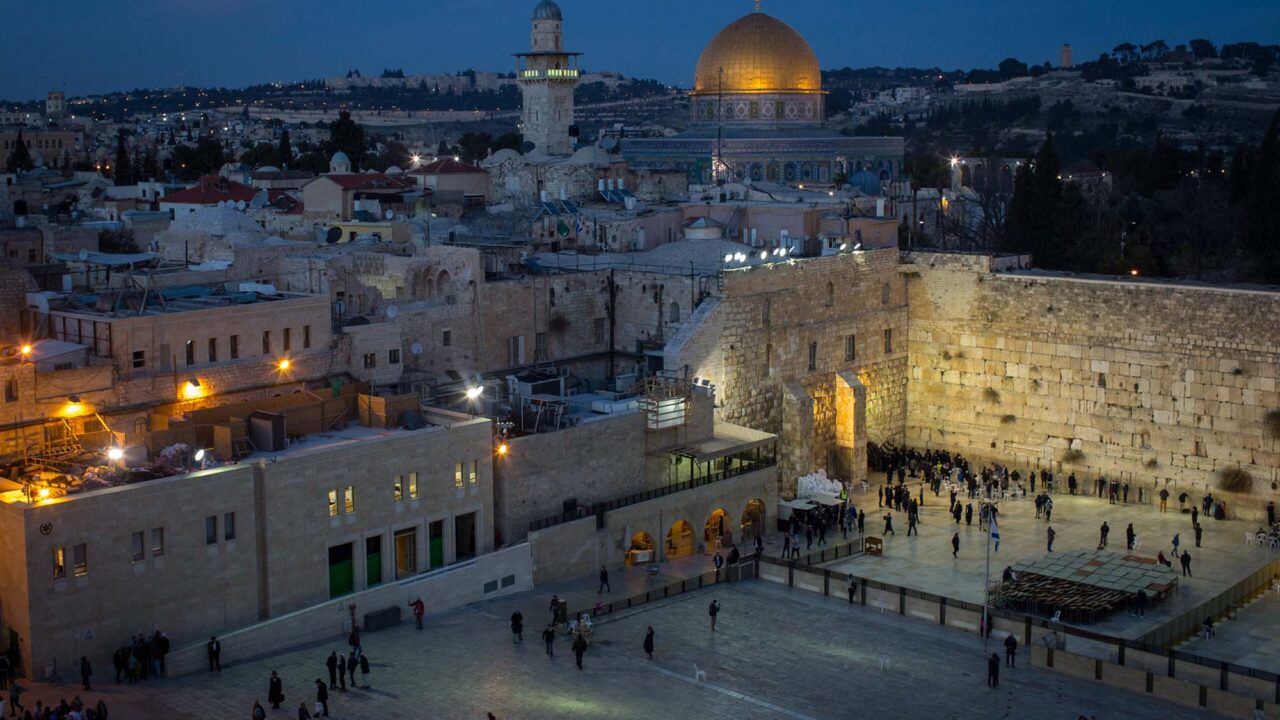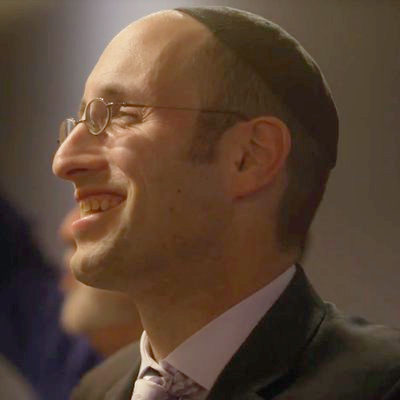‘These Stones Are Not Silent’
Why the Temple Mount is inseparable from the identity of the Jewish people and the State of Israel.

On May 6, 2022, Israel’s Independence Day, the Temple Mount was opened to Jews for the first time in 11 days. Jewish visitors, calmly and proudly walking into the sacred space, were hurried through the site by police. Their efforts to sing the national anthem and hoist the Israeli flag were quickly curtailed by Israeli police. The patriotism and reverence on display inspired the pride and respect of many.
But to one minister of the current government, Jews such as these are a menace. In an interview several days earlier, the Labour Party’s Diaspora minister, Nacham Shai, blamed the tensions at the site on one group, and it was not Hamas. No, it was the Jews of Israel, in his view, who had the gall to seek to visit Judaism’s holiest site; even worse, in his view, was that some had violated the “status quo,” according to which Jews can visit, but not pray, at Judaism’s holiest site. “There are a lot more Jews who are going up to the Temple Mount. There are some that stop on the way and pray, which was forbidden,” Shai said in an interview. He added: “There is a certain escalation, a certain deterioration. Also, with the status quo. They opened the Mount and let more and more Jews go there. The price that we will pay later, all of us, will be huge.”
This ascription of blame to the Jews of Israel is a calumny. As David Weinberg has noted, the fact is that “the so-called status quo on the Temple Mount in Jerusalem has long been dead. It has been violated repeatedly in recent years by radical Palestinian and Islamic actors who have turned the mount into a base of hostile operations against Israel, instead of protecting it as a zone of prayer and peace.” Indeed, events immediately prior to May 6, during a period in which Israel had acquiesced to Jordanian demands and barred Jews from entry, proved Weinberg’s point. A PLO flag hung from the Dome of the Rock for 10 days. On April 27, on the eve of Holocaust Memorial Day, an assembled crowd that had purportedly come to the Mount to worship on Ramadan at the Al Aqsa Mosque chanted “Khayber ya yehud,” a battle cry against Israelis referencing an Arab war against Jews in the seventh century. On April 29, Israeli police were forced to close the site as rioting “worshippers” threw stones and firecrackers at the Jews praying at the Western Wall below.
All this reveals that the questions of Jewish presence on, and the right to pray at, the Temple Mount are bound up with the very issue of Israel’s right to exist itself. To understand why, we must journey back to the last time in history that a government sought to prevent traditional Jewish prayer, and the singing of “Ha Tikvah,” at a sacred site.
In 1942, Menachem Begin arrived in British Mandate Palestine. At that time, only a narrow alley in front of the Western Wall was available for Jewish prayer, but even then certain rituals were banned. And at the conclusion of Yom Kippur, the British would arrest—and club—Jews who sought to sound the shofar or sing “Ha Tikvah.” To Begin this was intolerable:
What our ancestors refused to tolerate from their ancient oppressors, even at the cost of their lives and freedom—is tolerated by the generation of Jews which describes itself as the last of oppression and the first of redemption. A people that does not defend its holy places—that does not even try to defend them—is not free, however much it may babble about freedom.
Begin’s group, the Irgun, regularly smuggled shofars into the site, resulting in their arrest. There were those, however, who argued that the concession to British demands was necessary for interfaith amity. Thus Begin described how “among the Jews themselves there were unexpected allies who, in snobbish pretence of ‘progress,’ argued that a few pedigree cows were worth more than all these stones.” But that “progressive” political posture, he noted, only makes sense if the stones are devoid of holiness, a possibility belied by the stones themselves:
But the ancient stones themselves refute the nonsense of these pathetic “progressives” who try to impress foreigners with their “freedom from old fashioned prejudice.” These stones are not silent. They do not cry out. They whisper. They speak softly of the house that once stood here, of kings who knelt here once in prayer, of prophets and seers who here declaimed their message, of heroes who fell here, dying; and of how the great flame, at once destructive and illuminating, was here kindled….The testimony of these stones, sending out their light across the generations.
Begin’s point is at once simple and profound, and what he wrote about the Western Wall is all the more true about the top of the Temple Mount itself, the site of “the great flame” and “the house that once stood” on that site. Are the stones silent or are they not? Is there still a profound Jewish connection to this site or not? If these stones are not silent, if they still whisper, “sending out their light across the generations,” how could a Jew possibly visit the sacred without being moved to prayer? And if the stones of the Temple Mount are indeed dead, silent, no longer linked to a living Judaism—if reverence for them is mere “old fashioned prejudice—then it makes sense to allow Jewish visitors as mere tourists, uttering nary a word, their silence paralleling those of the stones themselves. But then, why is the Western Wall itself a site of Jewish longing, and why should Jerusalem itself be of importance to Jews?
The question of what the Temple Mount embodies is bound up with the identity of the Jewish people, and of the State of Israel. Norman Podhoretz has suggested that the quest to divide Jerusalem is an attempt to assault the “scandal of Jewish particularity,” the notion that Jews have a unique destiny linked to one land on the earth. In the Bible, this “scandal” is made most manifest on the Temple Mount, where a universal God is described as choosing one mountain, among one people, as His eternal dwelling place.
It is just this that many seek to assault, denying the Jewish link to the land by seeking to ensure that the Mount remain devoid of Judaism if not of Jews. Begin similarly described the motivations of those who attempted to limit the sounding of the shofar and the singing of “Hatikvah” at the Wall: “Living testimony to a glorious past? A charter of rights hewn in ancient stone? Precisely for these reasons must the stones of the wall be taken from the Jews.” Thus a study of Jewish history reveals that the debate about Jewish rights in ancient Jerusalem, now as then, is linked to something larger: whether the Jewish reverence for this site, and the expressed longing for all that once occurred there, is mere “superstition,” or whether such faith is reified by the very stones that whisper still.
In the days before the May 6 Jewish pilgrimage, the newspapers of Israel, from the right-leaning Israel HaYom to the leftist Haaretz, published a poll revealing that at least 50 percent of Jewish Israelis believe that Jews should be allowed to pray on the Temple Mount. By the end of Independence Day, around 1,000 Jews had ascended to the Temple Mount, four times as many as those who had ascended on the last Independence Day before the pandemic. They were celebrated online by another minister of the government, Ayelet Shaked, heightening the contradictions in this coalition regarding a matter central to Israel’s identity. One fact is clear: The ancient stones are not silent, and the argument over the Temple Mount has only begun.
This essay was originally published in Commentary.
Why the Temple Mount is inseparable from the identity of the Jewish people and the State of Israel.
Why the Temple Mount is inseparable from the identity of the Jewish people and the State of Israel.

